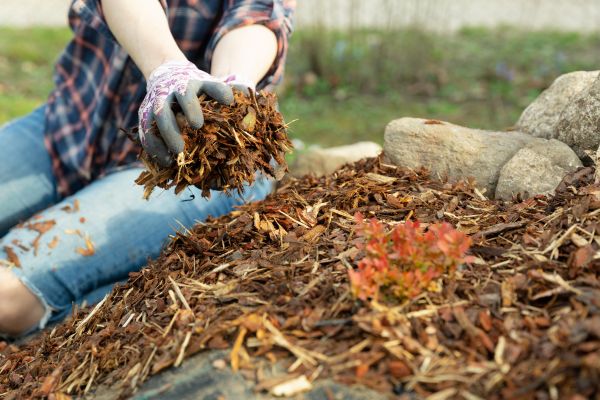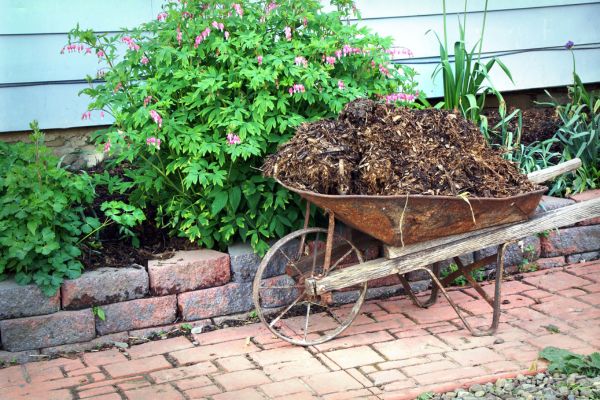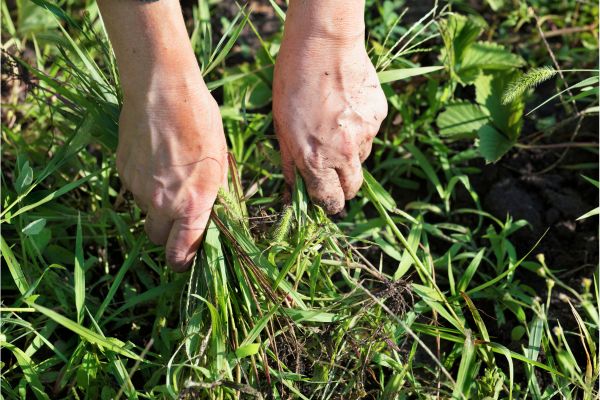You want a beautiful, thriving outdoor space, and you’ve probably heard mulch is one of the easiest ways to help you achieve that. After all, mulch suppresses weeds, conserves water, protects against soil erosion, balances ground temperature and so much more. While it’s true that brown mulch is one of your keys to a thriving landscape, it can also have devastating effects if not used properly.
But how do you properly use that brown mulch for sale, so it doesn’t wreak havoc on your lawn beautifying efforts? At Lumberjacks, we pride ourselves on being mulch experts, and we want to share our vast professional knowledge with you! That’s why we’ve developed this list of seven common mistakes you’ll want to avoid when using brown mulch to see the best possible results. Continue reading below to hear what they are!
Have you already done your research and are ready to skip ahead to purchasing high-quality, organic, kiln-dried hardwood mulch? Click the button below to order brown mulch delivery or pickup today!
1. Building Mulch Volcanoes
Mulch volcanoes are small piles of brown mulch around the base of the tree that look like, well, volcanoes. This mound covers the tree’s roots and the lowest part of the base – and it’s a big problem. Why? All that mulch makes it hard for the roots to breathe, causing the tree not to get enough oxygen. Plus, it can trap too much moisture in the soil, roots and tree trunk, leading to rot, decay and fungal infections. Oh, and lots of invasive bugs love mulch volcanoes.
Instead of piling up the brown mulch around your trees, you’ll want to avoid laying it next to the trunk. Ideally, leave one to two inches of bare ground in a circle around the tree. The best way to do this is to:
- Mulch outwards from the tree trunk (not upwards)
- Cover the ground from your starting point to the tree’s drip line
- Lay no more than two to four inches of brown mulch
2. Laying Brown Mulch Too Thick
Mulching too thickly isn’t only a problem with trees but for all plants. Many people new to mulching think that more is better, but that simply isn’t the case. Moderation is best because it allows you to reap the benefits of premium brown mulch without any dire consequences. Overly thick mulch leads to dehydration, pest infestations, suffocation, rot, decay and a host of other problems in your shrubs, flowers and soil.
Instead, you’ll never want to use more than four inches of ground covering. The appropriate thickness will vary from plant to plant, so it’s a good idea to do some research.
Generally speaking, woody plants like trees and thick shrubbery will need three to four inches (but never right against their bases). Plants with thinner bases, like flowers, will only need two to three inches of mulch.

3. Not Using Enough Ground Cover
Not using enough ground cover can be just as bad for your outdoor space as using too much. It’s all about balance, which is why we recommend between two and four inches of brown mulch, depending on the type of plant.
Too little mulch won’t suppress weeds, so they’ll still be able to take hold in your garden beds. The problem with weeds isn’t only that they’re an eyesore. They can also leach the nutrients out of the soil and leave your beautiful flowers without everything they need. Spreading less than two inches of brown mulch also prevents moisture retention.
Feeling a little confused about what’s too much or too little mulch? We recommend doing research for the specific type of plant you’re going to be laying around. But we’re also happy to provide recommendations when you place your order! Just ask!
4. Using Low-Quality Brown Mulch
A poor-quality mulch is going to do more harm than good. Instead of nourishing your soil and plants, it could end up poisoning them. That’s because low-quality mulch can contain inorganic ingredients that won’t break down, pesticides or invasive pests that will quickly destroy your landscape.
You want to choose a premium brown mulch instead, even if it costs a few dollars more. That extra money is well spent on the peace of mind you get knowing your landscape will thrive. When determining whether mulch is of a high quality, ask yourself if it’s:
- Organic?
- Made from quality hardwood?
- Carefully hand sorted?
- Sourced locally?
The mulch we sell at Lumberjacks meets all these criteria – plus, it’s crafted from kiln-dried hardwood! That means the original logs the mulch is made from have undergone a unique process that dries it to prevent mold and mildew. Kiln-drying also eradicates any bugs, pesticides, fungi, mold and mildew that may have been hiding in the wood.

5. Picking the Wrong Type of Mulch
Choosing premium organic hardwood is a great first step. But you’ll also want to avoid selecting a mulch type at random. Instead, consider which hardwood mulch is best for your unique needs.
There are a few different types of wood mulch, which are each best at different things. For example:
- Hardwood bark looks great and keeps its appearance longer than alternatives.
- Shredded hardwood is one of the best at trapping moisture in the soil.
- Pine bark is easy to apply and provides a lot of soil nutrients as it decomposes.
- Cedar can help repel harmful pests like termites.
- Various colors can help create different landscape aesthetics.
6. Forgetting to Weed First
Mulch is meant to help suppress weeds, so you may forget to pull the ones already in your garden bed before time. But this can be a huge mistake. Failing to pull weeds first can mean allowing them to grow up through the mulch. At least, this happens with mature weeds, whereas mulch can usually smother younger ones.
Before laying down your brown mulch, take a few minutes to pull any noticeable weeds in your garden beds. Avoid weed killers, as the chemicals can also kill off your plants.

7. Skipping Brown Mulch Entirely
We’ve already discussed how beneficial mulch is for your outdoor space, so it should be no surprise that you don’t want to skip out on it entirely. But, some people may feel overwhelmed when learning what not to do (or do) when mulching and decide to forgo it.
We definitely recommend pushing forward with mulching your outdoor space. However, if you’re feeling overwhelmed, here are a few tips to help:
- Take your time, and don’t rush
- Have all the necessary tools on hand ahead of time
- Enlist the help of friends, neighbors or family for larger projects
- Never be afraid to double-check your research
- Ask a mulching professional for guidance if you’re still unsure
Ready to Order Premium Brown Mulch?
Don’t let this list of common mistakes fool you – using premium brown mulch is a simple way to quickly (and significantly) help your outdoor space thrive. It just takes a little research and planning to ensure you’ve chosen a high-quality product and are laying it correctly. With a bit of practice, you’ll be a mulch-laying expert!
At Lumberjacks, we’re proud to provide the greater Chicagoland area with premium red, brown or black mulch. Plus, it comes with the added benefit of our unrivaled dedication to customer service. Place your mulch order today using the button below to get started.








